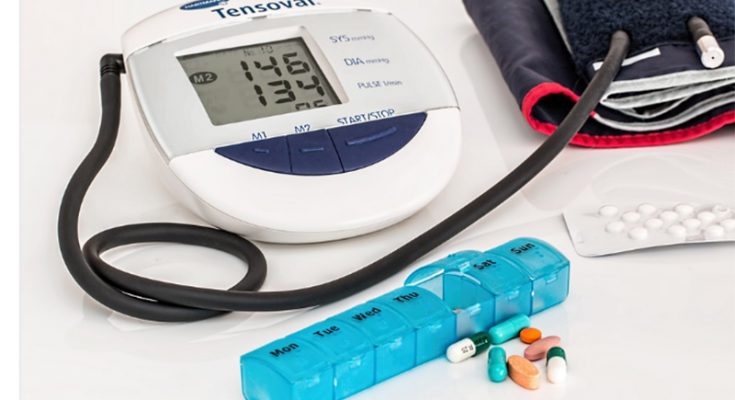Dallas: High blood pressure in children is not uncommon, and research shows it may lead to high blood pressure in adulthood, as well as problems with the heart, blood vessels and kidneys, according to a new scientific statement from the American Heart Association published today in the Association’s Hypertension journal.
An American Heart Association scientific statement is an expert analysis of current research and may inform future guidelines.
An estimated 2-5% of children have hypertension, or high blood pressure, and primary hypertension—indicating it is not due to an underlying medical condition—is now the most common type of high blood pressure in kids, especially in adolescents.
The new scientific statement reviews current evidence of what leads to high blood pressure in children and adolescents, and highlights clinical and public health implications for health care professionals, researchers and the public.
“Primary hypertension onset in childhood is not a benign condition,” said Bonita Falkner, M.D., FAHA, chair of the scientific statement writing committee and an emeritus professor of medicine and pediatrics at Thomas Jefferson University in Philadelphia. ”This is a health problem that is often amplified by lifestyle and behaviors, many of which are modifiable. Since kids with high blood pressure levels tend to maintain high blood pressure into adulthood, diagnosing and appropriately addressing high blood pressure in youth is imperative to ensure improved lifetime health as early as possible.”
Blood pressure is recorded using two numbers: the systolic blood pressure (the top number in a blood pressure reading) indicates the pressure blood is exerting against the artery walls when the heart beats; and the diastolic blood pressure (the bottom number in a blood pressure reading) indicates the pressure blood is exerting against the artery walls while the heart is resting between beats. High blood pressure occurs when the force of blood flowing through the blood vessels is consistently too high. Damage from high blood pressure may lead to heart disease potentially leading to heart attack, stroke, kidney disease, peripheral artery disease, vision loss, angina (chest pain) and more.
Some factors that may contribute to high blood pressure in children are not modifiable, such as genetics, low birth weight and even environmental exposures. One large study in China evaluated children ages 7 through 18 and found an association between air pollution from industrial and vehicle emissions and other pollutants and an increased risk of abnormal blood pressure.
There are some significant risk factors for high blood pressure that may be modified to improve blood pressure levels, including obesity, physical activity and a key factor—nutrition.
A recent meta-analysis of 18 studies with high-quality data on sodium intake and blood pressure found that systolic blood pressure readings increased by 0.8 mm Hg and diastolic blood pressure levels increased by 0.7 mm Hg for every additional one gram of daily sodium intake.
This is concerning because dietary sodium intake in the U.S. among children is above recommended nutritional guidelines, according to the 2019 report from the National Academies of Sciences, Engineering and Medicine.
“A healthy lifestyle in childhood may be extremely helpful in mitigating the risk of developing hypertension in youth,” said Falkner. “Preventive measures for families that promote healthy lifestyles in children are important, such as eating healthy food, encouraging physical activity that leads to improved physical fitness and healthy sleep, and avoiding the development of obesity. Regular blood pressure monitoring by a health care clinician is also essential so that if high blood pressure is present, it can be quickly detected and addressed.”
Recognizing high blood pressure in children and adolescents who are otherwise healthy and without symptoms may be challenging.
Health care professionals should be trained on the specific techniques to measure pediatric blood pressure more accurately, and if levels are elevated, the child’s blood pressure should be checked on at least three different days using appropriate measurement techniques, as outlined in the scientific statement.
Current pediatric guidelines from the American Academy of Pediatrics, European Society of Hypertension and Hypertension Canada define a diagnosis of childhood-onset high blood pressure to be systolic and/or diastolic blood pressure levels that are greater than the 95th percentile of blood pressure values in healthy children, based on age, sex and height. There is currently a lack of data on specific blood pressure levels in childhood that may predict later cardiovascular conditions, such as heart failure, kidney failure, stroke or cardiovascular death, and thus the use of the 95th percentile guidelines rather than measures for high blood pressure in adults.
When high blood pressure is diagnosed in youth, treatment may include dietary changes, increased physical activity, a reduction in screen time (television or other digital devices) and in some cases medication. Studies on medication recommendations for high blood pressure in youth are somewhat lacking. There is only one long-term randomized clinical trial that examined high blood pressure medication in children, and it was specifically in children with chronic kidney disease. Since primary hypertension is now known to be the main type of high blood pressure in youth, trials are needed focusing on medications for children with high blood pressure not related to another medical cause.
The statement authors note that public health efforts to study and improve high blood pressure in children may be difficult for numerous reasons, yet it may be useful to gather information from pediatric databases to calculate and monitor trends in blood pressure in children relative to population-based variations in obesity, physical activity, nutrition, unmet social needs and adverse childhood experiences. Additionally, broader interventions, such as lowering sodium content in food in the U.S. and providing healthier food choices in schools, may be helpful in improving cardiovascular health particularly during childhood.
“There is a need for increased understanding and greater research surrounding high blood pressure in youth,” said Falkner. “Future studies to improve both the recognition and diagnosis of high blood pressure in this age group, as well as clinical trials to evaluate medical treatment and recommend public health initiatives, are all vital to improving the increase we are seeing in hypertension in children.“
This scientific statement was prepared by the volunteer writing group on behalf of the American Heart Association’s Council on Hypertension; the Council on Lifelong Congenital Heart Disease and Heart Health in the Young; the Council on Kidney in Cardiovascular Disease; the Council on Lifestyle and Cardiometabolic Health; and the Council on Cardiovascular and Stroke Nursing.
American Heart Association scientific statements promote greater awareness about cardiovascular diseases and stroke issues and help facilitate informed health care decisions.
Scientific statements outline what is currently known about a topic and what areas need additional research. While scientific statements inform the development of guidelines, they do not make treatment recommendations.
American Heart Association guidelines provide the Association’s official clinical practice recommendations.





